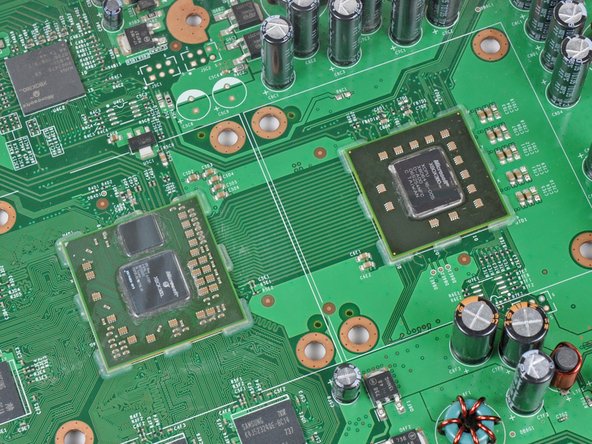iFixit is a proud supporter of the 2024 Open Hardware Summit taking place May 3 & 4, 2024 in Montreal, Canada.
Hardware is hard. It’s a bit of a cliché to say so, but it’s a saying for a reason. Hardware is cost-intensive to develop, takes a lot of time and expertise to get right and when something goes wrong, fixing it can be a tough challenge. This is true not just for small newcomers, but also big players.
Hacky Hardware and Hardware Hacks
Just ask Sony and Microsoft. Both faced hardware-related overheating issues in their mid-2000s console generation. While the Xbox 360’s issue became known as the “Red Ring of Death” which led some people to literally bake their console in hope of a fix, the PlayStation 3 faced a similar “Yellow Light of Death” issue. You might even remember Antennagate: Covering up the lower left edge of the iPhone 4, which constituted a major redesign from the iPhone 3G, would negatively affect the network strength, due to the antenna being integrated into the frame.
Xbox 360 Red Ring of Death Fix Kit
Use this guide to install iFixit’s Red Ring of…
Still, Hardware has become a lot more accessible in the recent past. Affordable single-board computers like the Raspberry Pi or the Arduino platform, microcontrollers like the ESP32 and the ubiquity of 3D printing have made it easier for non-engineers to tackle hardware projects and created a sprawling community of makers that change the hardware world for the better.
That includes fixing stuff that is broken but needs some hacking to be fixed. An Arduino, for example, can be used to extract and fix the firmware of your washing machine, after the manufacturer refused to do so. Everyone that tried to upgrade anything on their car, be it a backup camera or a console system, can share tales of the hacking necessary to get it done.
Out in the Open
Going beyond modifying existing (proprietary) hardware, there are those who try to build it from scratch, out in the open. The Open Source Hardware community is built on the idea that sharing knowledge freely fosters innovation, collaboration, and empowers users to modify, improve, and repurpose their technology to better meet their needs. This even goes as far as providing the design to have users build (and mod) the hardware themselves, if they so wish.
One major area where closed hardware has caused some significant headache is farming. Modern agriculture equipment has changed so that repairs can’t be done by farmers themselves or local mechanics, but only by the dealers and manufacturer technicians.The main culprit is the increased computerization combined with software lockdowns. Even with an MOU in place since 2023, farmers continue to face major issues when their equipment breaks.
The Open Source Ecology movement is an antithesis to this development. It’s a long-lasting and ambitious project to provide the information to fabricate the “50 most important machines that it takes for modern life to exist”. That list includes, among others, several agricultural machines.
While Open Source Ecology’s tractor is in the prototype stage, the Oggún actually already exists. Initially intended for Cuban farmers, the $20,000 machine aims at creating independence for small-scale farmers and uses a design that invites modification utilizing off-the-shelf parts. It’s a tractor to fix in the field, instead of having to wait for a manufacturer-certified technician. Horace Clemmons, the creator of Oggún, emphasizes that to them “[i]t’s more than a tractor, it’s a way of THINKING.”
An Open Source Laptop
MNT Reform
Open hardware laptop designed and assembled in Berlin, Germany. Released in 2021.
View DeviceBig farming equipment is one thing, but when it comes to consumer hardware, Open Hardware becomes a whole different challenge.
While companies like Framework and Fairphone have been good at being transparent by providing repair information and access as well as general schematics, they are unable to be completely open when it comes to the hardware. One major reason for this is the reliance on a hardware supply chain peppered with NDAs.
One company that takes a completely different approach to that is MNT Research. Over the last couple of years, the Berlin-based company created and iterated on the Reform laptop, which they fully open sourced. MNT Research’s documentation is extensive, offering a detailed operator handbook, DIY assembly instructions and even repair guides available on iFixit.
While it is certainly a bit chunkier than a MacBook Air, you get a device that you can truly make your own. This includes the ability to switch out processor modules. The laptop features a transparent bottom cover that lets you see inside the device. Looking through, one cause for the thickness is revealed: The laptop is powered by 8 individually owner-serviceable 18650 cells.
The openness has allowed community members to modify their devices. One fascinating example is one owner that replaced the DC barrel jack with a USB-C port, so they could utilize USB-PD for external power. The same user also modified the keyboard, changing the standard layout to a split one.
MNT Research isn’t the only actor trying to change things for the better when it comes to openness and transparency. They are part of the Open Hardware Allianz, a network for open hardware in German-speaking countries. On a more global scale, the Open Source Hardware Association bundles forces when it comes to popularizing and supporting Open Hardware.
So yeah, hardware is hard. But there are a lot of passionate people working on making it more accessible and transparent, tearing down the walls around technical secrecy. We’ve been saying it for years: Your devices don’t have to be incomprehensible, you don’t need to be a certified expert to figure out how it works. Understanding empowers tinkering and we need more tinkerers.






0 Comments